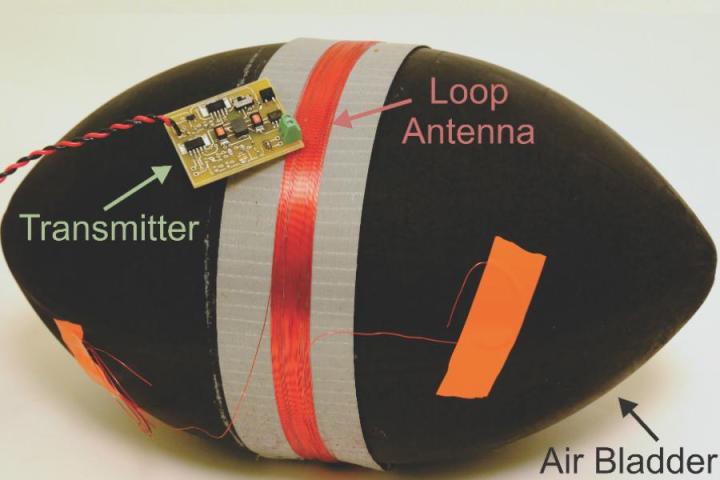
In the game of football, one question always reigns supreme: Where exactly was the ball?
Despite the introduction of slow-motion instant replay, sometimes it’s still pretty tough to know if the football actually crossed into the end zone, or if your team really got that first down or not.
Well now, referees may be getting a little more help figuring out where that elusive football is it all times.
In collaboration with Disney Research, scientists from North Carolina State and Carnegie Mellon University have created the “Localization with Magnetoquasistatic Fields and Complex Image Theory” project. All that complicated verbiage translates to a new technology that uses low frequency magnetic fields to track a light-weight object’s position in a 3D plane.
In this case, it’s your typical NFL-standard pigskin.
Such a tracking system could eliminate the need for coaches to challenge plays they think were unfairly called, as well as aid referees when the ball is partially blocked from view — like when it’s underneath a large pile of defensive linemen.
The technology works by embedding a low-frequency transmitter inside the football, which sends signals to antennas stationed around the football field. These receivers are then able to determine the 3D position and orientation of the ball while it’s in play.
“Low frequency magnetic fields don’t interact very strongly with the human body, so they are not affected by the players on the field or the stadium environment,” Dr. David Ricketts, associate professor of electrical and computer engineering at NC State and senior author of a paper describing the research, said in a press release. “This is part of what makes our new approach effective.”
And to top it off, the transmitter is within the standard deviation of accepted professional football weights, meaning the system could potentially be utilized by the National Football League without much issue.
The researchers are still fine tuning their system, but they successfully tested their football prototype at a college-level football practice (a video of which can be seen here). They have also published their research online in IEEE Antennas and Propagation Magazine.
So sorry football fans, drunkenly fighting in the living room over disputed calls may no longer be part of the game watching experience.
Editors' Recommendations
- Fighting football injuries with 3D-printed, hyper-personalized pads
- Researchers track a cosmic whale to learn about galaxies’ magnetic fields
- Thought-controlled robotic hand can play games of rock-paper-scissors


